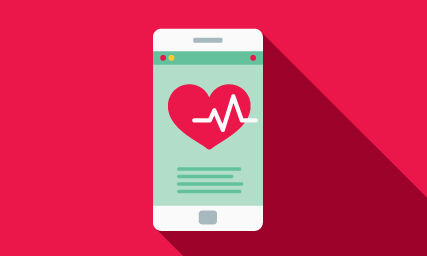Dr. Paola Martinez, a neurologist at University Health, discusses the differences between stroke and heart attack. Learn the signs of each condition, how to prevent them and what treatment and recovery is like for each.
Symptoms of Heart Attack
Blocked blood vessels cause heart attacks. Signs of heart attack may include:
- Chest discomfort such as pressure, heaviness or pain
- Shortness of breath
- Pain or discomfort in one or both arms, back, neck or jaw
- Abnormal heart palpitations
- Lightheadedness, nausea or sweating
Women tend to have different symptoms of heart attack than men. Diabetics also have atypical presentations and even “silent heart attacks” – not necessarily without symptoms but unusual symptoms, such as, generalized weakness, upper abdominal pain, nausea/vomiting, etc.
Symptoms of Stroke
A stroke happens when a blood vessel that carries oxygen to the brain is blocked or bursts. The two main types of strokes are ischemic and hemorrhagic.
Ischemic stroke is due to a vessel that has a blockage such as a clot and hemorrhagic is due to a vessel bursting.
“When you have a stroke, (your symptoms depend on) where in the brain the stroke has happened,” Dr. Martinez said.
BE FAST to Spot a Stroke
Symptoms of stroke can affect one or both sides of your body. They can be remembered by the acronym, BE FAST.
- Balance problems
- Eyes blurry or loss of vision
- Face drooping on one side
- Arm or leg weakness and/or numbness
- Speech problems
- T stands for time.
Getting treatment quickly is important to ensure the reversal of these effects. “The longer we keep the brain without oxygen supply, then you could have irreversible brain damage, and potentially have those symptoms becoming irreversible,” Dr. Martinez said.
Risk Factors for Stroke and Heart Attack
Risk factors that put you at higher risk for both heart attack and stroke include:
- High cholesterol
- High blood pressure
- Uncontrolled diabetes
- Obesity
- Tobacco
- Smoking
- Stress
- Some heart conditions like atrial fibrillation
- Illicit drugs such as cocaine
Treatment for Heart Attack Versus Stroke
Treating a heart attack is similar to treating a stroke because they are both caused by problems with your blood vessels.
“For the most part, the goal for treating both is similar – save a heart muscle in a heart attack and save brain function in a stroke,” Dr. Martinez said. “With a heart attack it’s about getting to the cath lab for an intervention to open up the blocked artery using a balloon & stent, also known as percutaneous coronary intervention.”
To treat a stroke, your doctor may give you blood thinning medication to dissolve the clot and/or your doctors may try to surgically remove the clot.
Dr. Martinez said “the quicker the better” when it comes to treating a heart attack and a stroke. Neither the brain nor the heart regenerate – once those cells die, they are gone forever.
Treating a stroke and a heart attack are both time-sensitive because the brain or heart cannot function properly without oxygen.
Outlook and Recovery
If you don’t intervene early in a heart attack to restore blood flow, depending on the size of the area supplied by the blocked artery, you may die, or part of your heart muscle dies, and that function of your heart won't be the same. You may experience long-term effects such as heart failure or abnormal heart rhythms.
If you don’t intervene early in a stroke to restore blood flow, depending on the area supplied by the blocked artery, you will have permanent deficits. Acting quickly ensures preserving brain function.
Recovery from stroke will look different for each person. “If part of your brain dies during a stroke, the rest of the brain takes over and tries to create new networks to do the things that that area of the brain was doing before,” Dr. Martinez said.
Coming in quickly when you begin experiencing the signs or symptoms of a heart attack or stroke is of utmost importance. Dr. Martinez urges patients to not “sleep it off” or ignore symptoms. “Recognize the symptoms, know how important it is to get to yourself to the hospital and don’t wait,” Dr. Martinez said.
Lower Your Risk for Stroke
“The same things you do to help your heart are the same things you're going to do to help your brain,” Dr. Martinez said.
Martinez said you should put your attention toward the modifiable risk factors, or the things you can change, which are:
- Eating well
- Exercising
- Preventing obesity or losing weight
- Controlling blood pressure
- Controlling high cholesterol
- Managing diabetes
- Treating obstructive sleep apnea
- Managing stress
- Getting good quality of sleep
- Not doing illicit drugs such as cocaine
- Compliance with your prescribed medications
- Routine follow-up and communication with your primary care provider to manage your risk factors and together lower your overall risk
Stroke Care at University Health
University Health is a certified comprehensive stroke center, recognized by the American Heart Association and The Joint Commission. This is the highest recognition, meaning we are capable of treating the most complex stroke cases with advanced diagnostics and have a dedicated neuroscience intensive care unit.

Heart disease is the leading cause of death for both men and women.
Our free online risk assessment only takes a few minutes. It will help you better understand your risk of developing heart disease and how you may be able to lower it.




